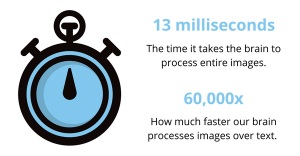Did you ever stop to recognize that we are all bombarded with “noise,” be it in the form of sound or motion or the endless pressure of the workplace, robbing us of the time we need to collect our thoughts, take a deep breath, and perhaps even have the chance to innovate?
Working with busy clients, I find the new normal to be one of near-constant interruption and a resultant inability to spend time in reflection – and real deep thinking. One executive, who was trained as an electrical engineer, put it simply: “The signal to noise ratio is unacceptable in today’s workplace.”
Signal to noise is technically the ratio of the strength of any signal carrying information to that of the interference that is present while trying to discern that signal. While it is generally expressed in decibels, it has come to be used in any number of fields, including WiFi networks. There are a significant library of equations describing it.
What my client referred to, however, was the ratio of useful information – the actual “signal” – we receive vs. the overload of “noise” that is endlessly transmitted our way. We effectively lose the “signal” due to the noise.
Our workplace has been transfigured in a little over thirty years. In the late 1980s, an “in” box and “out” box sat on each desk and letters and reports were drafted by hand or on typewriters. Back then, a phone call could interrupt us, but it was not forced upon us, especially if there was a savvy secretary sitting in the outer office running interference.
Fast forward to today, as emails pile up on our computer screens, chat boxes populate on top of them, and our personal devices hum with personal and professional texts. Often, we use streaming music to try to drown out the cacophony. And even then the inevitable mandatory video conference invitations (ironic that they are called invitations, isn’t it? Perhaps “mandates” would be more appropriate). Some clients lament that of 40 hours at work (virtual or in the office), all of those hours is scheduled in video or in-person sessions.
What can we do as leaders to mitigate the “noise” in our lives or at least take some initial steps? The first step, of course, is awareness that there is an issue. By naming it, we can begin addressing it. It might serve leaders to consider the following list or to develop their own. Try a few of these ideas – they have worked for many of our clients and can effectively help you hear the “signal” better and indeed reduce the “noise.”
- Reduce Multi-Tasking – Concede that “effective” multi-tasking is a non-sequitur. It is actually a sort of rapid serial processing that robs us of focus and creativity and can indeed make us less productive
- Turn off your Email – Turn off your email for 2-3 hours each day. When you open it up again, the emails will still be there. And do your best to teach your colleagues that “reply all” might be the most pernicious crime committed in the workplace.
- Silence Your Devices– Set the ring to “silent” on your personal device – and then put it into a drawer if you can. It won’t be afraid of the dark, believe me.
- Change the View – Change your vantage point in the office or home. Switch from one room to the other, depending on the sun or your mood. And spend some time just looking out the window!
- Cut Down on News– Stop listening or watching the news as much as possible. A quick reading of two or three news feeds will keep you informed about news events. And it will do it without arousing your emotions.
- Shorten Your Meetings – Do something innovative like set up 12-minute meetings! Yes, today’s e-calendars can accommodate that – we just seem to default to 30-minute increments. There isn’t anything magical about 30 or 60-minute meetings, but we do often succumb to Parkinson’s Law. A shorter meeting is crisper and so often more productive.
- Challenge Invitations – And don’t be afraid to challenge the meeting “invite” list. So often people get called together as the “usual suspects,” out of habit. Asking “I’d be glad to come, but what do you think I can add?” can be a good jolt to old habit patterns by leaders.
- Question Agendas – So too with the agenda. If it becomes evident prior to or even at the start of the meeting that there are no expected deliverables or outcomes, it can save everyone’s time if someone points that out and courageously suggests a cancellation or delay until we all know the “why” of a meeting and the establishment of an outcome-based agenda.
- Take a Coffee Break – Have a cup of coffee or tea – and just take the time to visualize the next few hours, the next day, and beyond. If you need to go outside or find a quiet nook, it’s well worth the time it takes to walk there.
- Disconnect and Enjoy Time with Your Loved Ones– Take time with your family and friends whenever you can. Create “device-free” zones, especially at dinner time. Be especially mindful of the times where your mind gets pulled away from loved ones and back to the office. Pausing and enjoying friendly conversation without distraction – that indeed is a signal that can recharge your batteries.
Business & Finance Articles on Business 2 Community
(205)
Report Post





